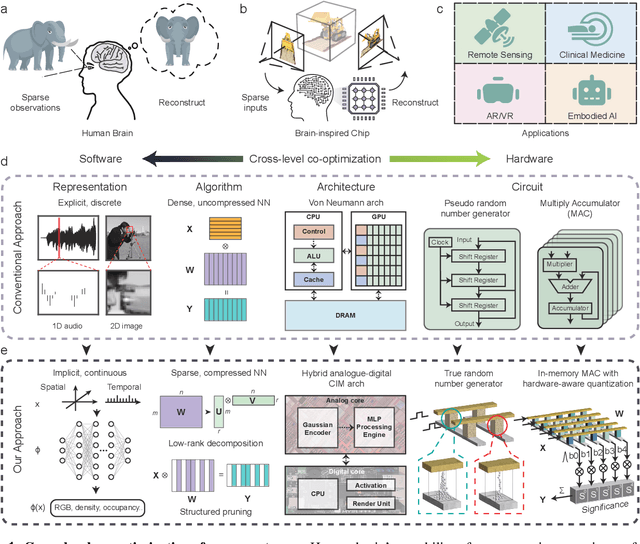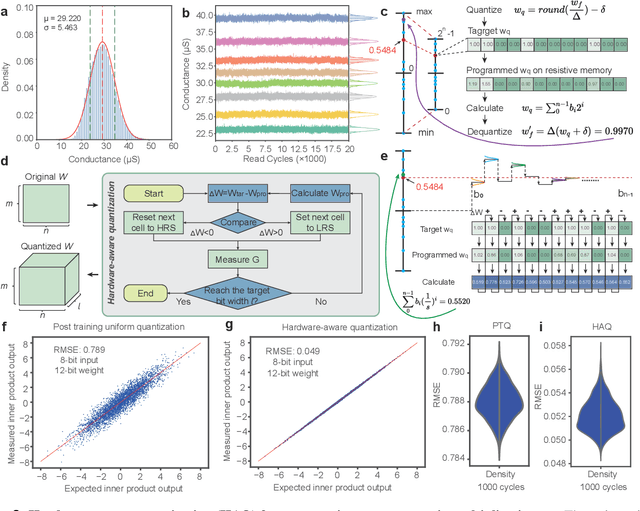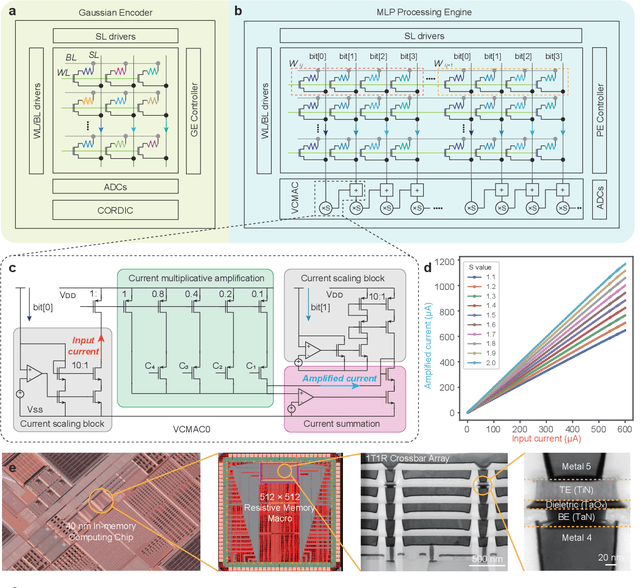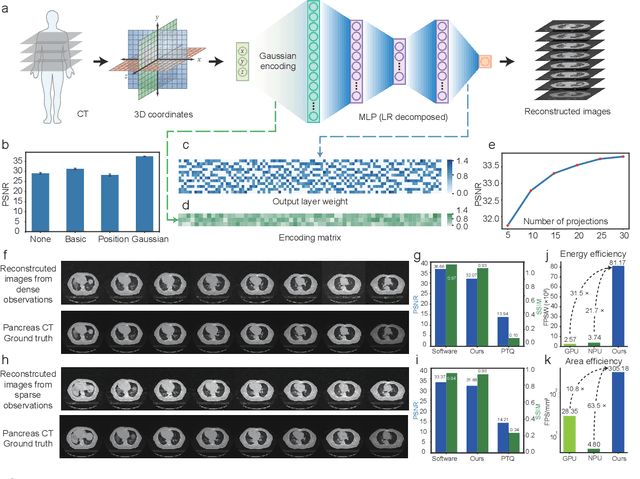Efficient and accurate neural field reconstruction using resistive memory
Paper and Code
Apr 15, 2024



Human beings construct perception of space by integrating sparse observations into massively interconnected synapses and neurons, offering a superior parallelism and efficiency. Replicating this capability in AI finds wide applications in medical imaging, AR/VR, and embodied AI, where input data is often sparse and computing resources are limited. However, traditional signal reconstruction methods on digital computers face both software and hardware challenges. On the software front, difficulties arise from storage inefficiencies in conventional explicit signal representation. Hardware obstacles include the von Neumann bottleneck, which limits data transfer between the CPU and memory, and the limitations of CMOS circuits in supporting parallel processing. We propose a systematic approach with software-hardware co-optimizations for signal reconstruction from sparse inputs. Software-wise, we employ neural field to implicitly represent signals via neural networks, which is further compressed using low-rank decomposition and structured pruning. Hardware-wise, we design a resistive memory-based computing-in-memory (CIM) platform, featuring a Gaussian Encoder (GE) and an MLP Processing Engine (PE). The GE harnesses the intrinsic stochasticity of resistive memory for efficient input encoding, while the PE achieves precise weight mapping through a Hardware-Aware Quantization (HAQ) circuit. We demonstrate the system's efficacy on a 40nm 256Kb resistive memory-based in-memory computing macro, achieving huge energy efficiency and parallelism improvements without compromising reconstruction quality in tasks like 3D CT sparse reconstruction, novel view synthesis, and novel view synthesis for dynamic scenes. This work advances the AI-driven signal restoration technology and paves the way for future efficient and robust medical AI and 3D vision applications.
 Add to Chrome
Add to Chrome Add to Firefox
Add to Firefox Add to Edge
Add to Edge